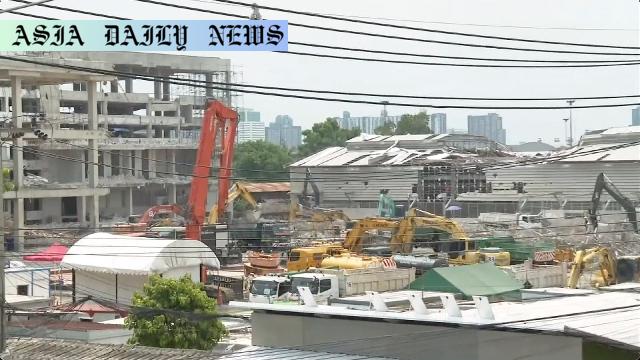Bangkok tower collapse investigation points to substandard materials and safety standard violations with 17 people facing charges.

Introduction: A Tragedy Unfolds
The collapse of a high-rise tower in Bangkok following the aftershocks of a major earthquake in Myanmar has left the nation reeling. With 92 lives lost and the structural failure being attributed to substandard construction practices, Thai authorities are taking decisive action to hold those responsible accountable. This incident, one of Thailand’s deadliest building collapses in recent years, has spotlighted serious shortcomings in construction standards, oversight, and compliance with safety regulations.
Arrests and Accountability
Authorities in Thailand have issued arrest warrants for 17 parties suspected of being involved in negligence and breaches of construction protocols. Among the accused are key representatives from one of the country’s largest construction companies and an executive from a Chinese state-owned subsidiary. The project was a collaborative venture between these two entities, making the faults evident in this partnership all the more concerning. Most of the suspects turned themselves in, cooperating with the ongoing investigation.
Questionable Construction Practices
The case has revealed alarming lapses in building practices. Through investigations, it was discovered that substandard materials, including concrete and steel, were utilized in the tower’s construction. Furthermore, accusations of forgery involving engineering documents point to systemic oversight issues and possible corruption. An illegally altered design document for the elevator shaft core is one example of the irregularities alleged by the police, exacerbating the risks and ensuring that the building was not equipped to handle stress brought on by an earthquake.
The Broader Implications
The partnerships underpinning this project highlight broader risks associated with collaborations involving foreign and local entities. The joint venture, although promising at face value, failed to achieve the most basic goals of sound engineering and safety compliance. This tragic building collapse underscores widespread issues in the construction industry, which demands urgent reforms. These reforms could include stricter compliance monitoring, improved anti-fraud measures, and updated safety standards with third-party reviews.
Final Thoughts and Call for Reforms
As the investigation progresses, the families of those killed at the site and citizens across Thailand call for justice. At its heart, this tragedy exposes the alarming consequences of neglect and malpractice in industries where safety is a primary responsibility. The proactive measures being taken, however late, instill hope that lessons will be learned, and stricter enforcement mechanisms implemented to prevent such devastating events in the future. When profit is allowed to overshadow safety, it’s the innocent who are forced to pay the ultimate price.
Commentary
The Human Cost of Negligence
It’s deeply unsettling to think about the lives lost in the Bangkok tower collapse—a tragedy that was entirely preventable. Construction is a field where precision, quality, and integrity must be at the forefront of every project. Yet, this disaster reveals how neglect in adhering to safety standards can lead to catastrophic outcomes. The families of the 92 victims deserve not only justice but also assurances from authorities that such tragedies will not occur again in the future.
A Collaborative Project Gone Wrong
The fact that this was a joint project between a leading Thai firm and a subsidiary of a Chinese state-owned company makes the incident even more concerning. Partnerships of such magnitude often create overlapping responsibilities, where accountability can get lost. Instead of raising the standard of work through collaboration, this example shows how lax oversight and cost-cutting measures can lead to devastating results.
Lessons to Carry Forward
Beyond assigning blame to key individuals, this tragedy must be a wake-up call for governments and construction entities around the world. Comprehensive auditing processes need to be in place at every stage of construction to ensure compliance. Additionally, more rigorous penalties for safety violations must be implemented to deter similar incidents. No family should ever have to deal with such heartbreak because corners were cut in construction projects.
Hope for Change
While there is no way to undo the damage or bring the victims back, the immediate arrests and accountability measures offer some hope. Moving forward, stakeholders involved in Thailand’s construction industry—private firms, international collaborators, and regulators—must take this tragedy as a harsh but necessary lesson. With the right policy changes and adherence to strict safety guidelines, we can prevent such incidents, ensuring safer environments for future generations.


